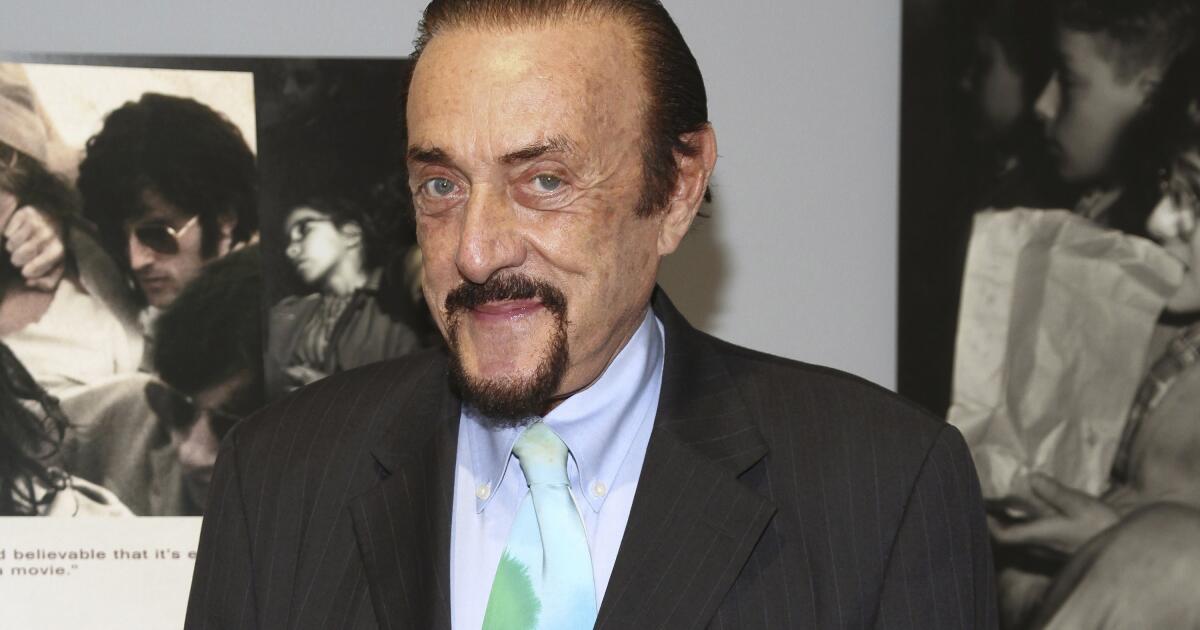Philip Zimbardo dead: Architect of the ‘Stanford Prison Experiment’

The reason was clear.
“Many people go about their daily lives thinking they have more control over their behavior than they actually do,” wrote a young psychology professor at Stanford University in 1971. “Usually we don’t know the great power that social situations hold for us. shape, direct and control our behavior.”
To prove these statements, the professor conducted an experiment.
Together with 24 male students, he built a prison in the basement of one of the university’s buildings. Its cells measure 6 by 9 feet. By tossing a coin, students were divided into prisoners and guards. The professor was the guardian.
During the day, the students (“young men who seemed gentle and caring,” as they were later described) find themselves at odds. The guards became cruel and cruel, the prisoners became sad, angry and withdrawn.
The study was intended to last two weeks. It was shut down after six days, but its effects have had a major impact ever since.
The main architect of this historic and controversial study – known as the “Stanford Prison Experiment” – was Philip G. Zimbardo, who died on October 14 at his home in San Francisco, according to Stanford University. He was 91 years old.
Hailed as “one of the most prolific and influential psychologists of his generation” by his Stanford colleagues, Zimbardo was also criticized for the active, non-objective role he played in experimentation. But while his methodology was questioned, he opened the door for a generation of social scientists to analyze the often subjective and irrational aspects of human emotions and behavior.
Fascinated by shyness, Zimbardo founded the Stanford Shyness Clinic to uncover the roots of anxiety, panic and social phobia. Impressed by the dedication, he founded the Heroic Thinking Project, dedicated to the belief – in his words – that “every seemingly ordinary person on this planet is capable of heroic deeds.”
He was president of the American Psychological Association in 2002, and after his retirement was honored for his volunteer work at Stanford. He received the Havel Foundation award in 2006 for outstanding work in the field of science and awarded the Richard W. Lyman Medal “for his contribution to the development and integration of psychological research and social action.”
Born in New York City on March 23, 1933, Zimbardo grew up in the Bronx. The eldest of four children, he attended Brooklyn College and Yale University, where he earned a master’s degree in experimental psychology and a doctorate in social psychology. After teaching at New York University and Columbia University, he joined the Stanford faculty in 1968.
At that time, psychology was very popular and influential in the field of investigation. The writings of Erik Erickson, RD Laing and DW Winnicott were rapidly changing assumptions about the development of the human mind.
Zimbardo’s “Introduction to Psychology” class was so popular that lines often formed outside the offices and ran into university quadrangles for students trying to be admitted.
Arguing that social structures – from work to schools, neighborhoods to marriages – can have different behaviors, Zimbardo showed that when people feel anonymous and superior and believe they can do things with impunity, they ignore the welfare of others.
As a young researcher, he once parked a battered car in suburban Palo Alto, and within three days of looking at it, he noticed that the car had been left untouched. He concluded that, destructive behavior is discouraged by a sense of community and a feeling of not being accepted in society.
On the other hand destructive behavior increases in societies that agree with it.
After the 1978 massacre of 909 people in Jonestown, Guyana led by charismatic leader Jim Jones, Zimbardo explored the social dynamics of cults. After calls for an investigation into the abuse of Iraqi prisoners by US forces at the Abu Ghraib prison, Zimbardo was called to the commission.
His work has ongoing implications for the study of “extreme forms of influence,” such as terrorist recruitment, cults and “human corruption or resilience in the face of authoritarian forces.”
“Understanding the dynamics and spread of situational power is essential to learning how to resist it,” he wrote in 2002, “and to weaken the dominance of the many agents of mind control who ply their trade every day for all of us behind many faces and borders.”
But his work in a mock prison in the basement of a building on Stanford’s campus defined his reputation.
Writing 25 years after the Stanford Prison experiment, he and his co-author, Craig Haney, who was also a researcher in 1971, did not hide how the result was “shocking and unexpected”: changing “many of the participants in unexpected ways, get ready. or prediction.”
Even as the academic community and the general public were left baffled by its conclusions, Zimbardo understood its importance in demonstrating that psychological research could be applied to everyday life and understood and appreciated by non-professionals.
He passionately argued that psychology was central to the national discourse on crime and justice and hated “politicians and policy makers. [who] now it seems to be worshiping the very kind of institutional power whose negative effects have been so thoroughly analyzed over the past 25 years.”
By applying the methods and theories of modern psychology to the origins of crime and the pain of incarceration, he hoped for “real and meaningful prison reform and criminal justice reform.”
“There has never been a more critical time to begin an intellectual struggle with those who degrade human dignity by using prisons only as structures of social control that punish without trying to rehabilitate, divide and oppress instead of educate and uplift, and destroy minority communities rather than protect and strengthen them.”
Source link

